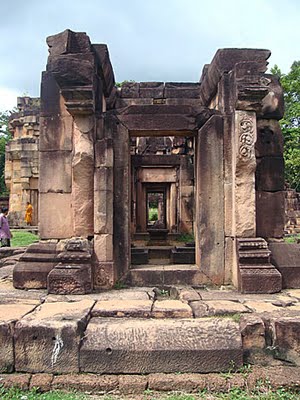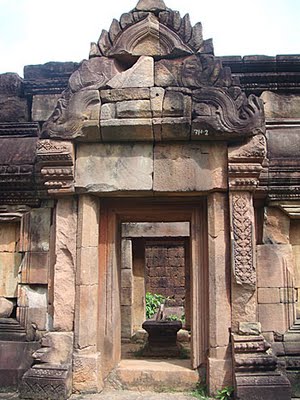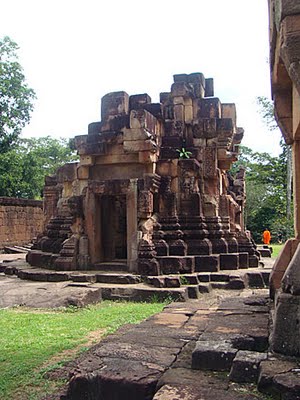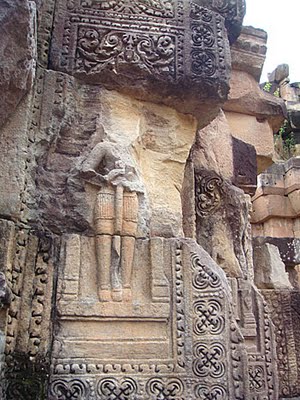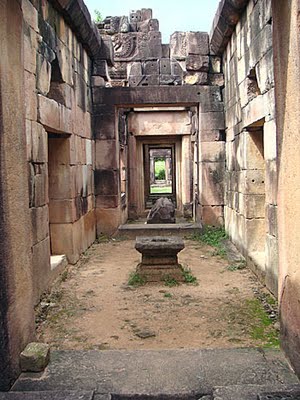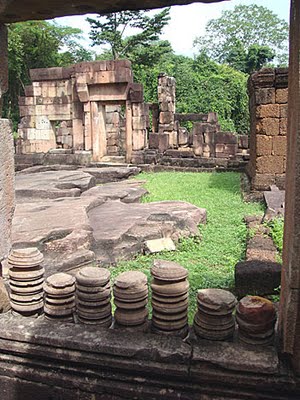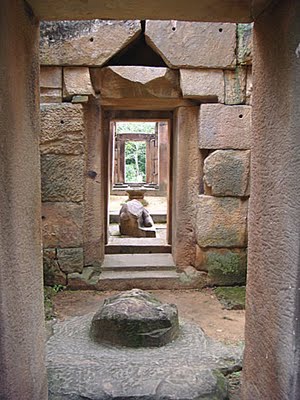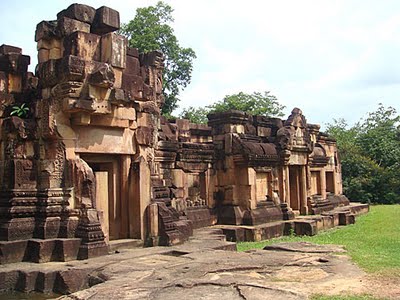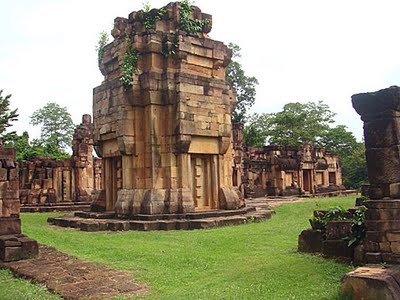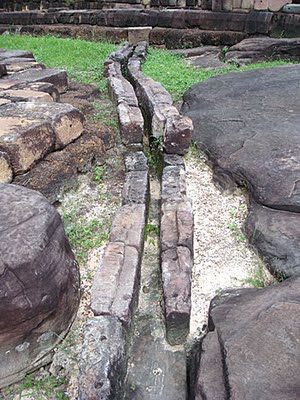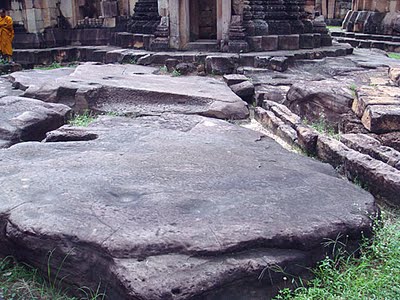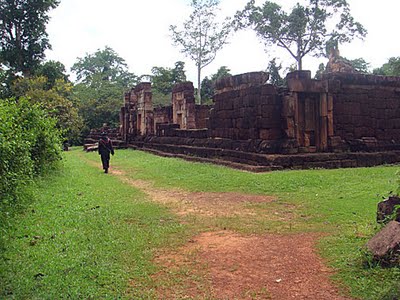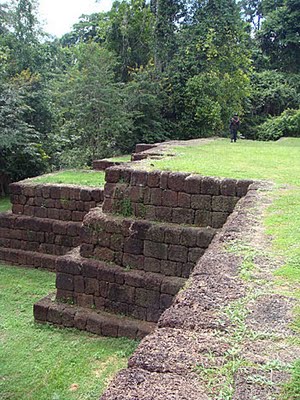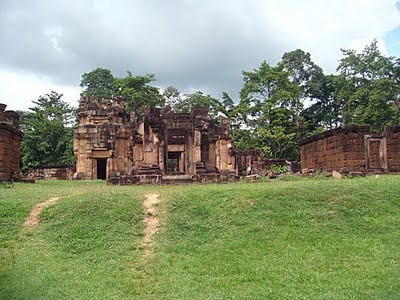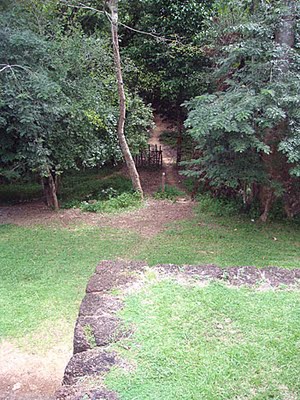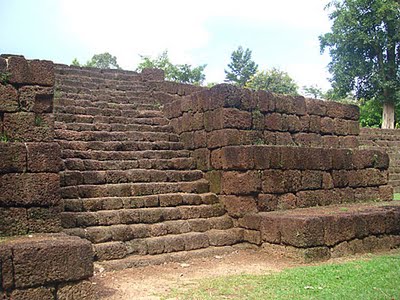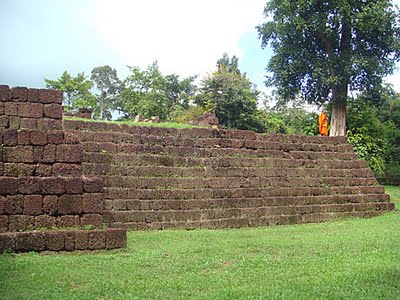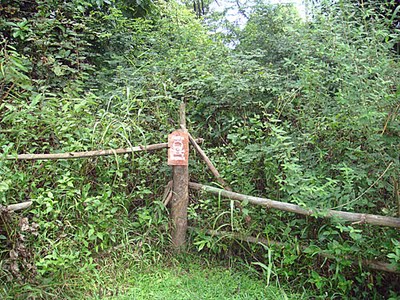A closer look
I was elated to visit Prasat Ta Muen Thom, a temple which virtually straddles the Cambodian-Thai border and which the two countries dispute ownership, last October whilst touring Isaan, but at the same time, devastated by the destruction that had taken place, robbing the temple of all of its carvings and sculptures, leaving just a shell of its original form. Built in the 11th century and reconstructed by the Thai art department in the 1990s, the temple unusually faces south and was located on a royal road that passed through the Dangrek mountains in the dim and distant past. The southern gopura greets you after climbing the laterite steps that lead down to the Cambodian border. There are other buildings in sandstone and laterite, a collapsed central tower and a natural linga hewn out of the rock base in the center of the shrine. In fact, the temple was built on top of a natural rock platform and another interesting feature is a rock channel for draining the waters poured over the linga. There are also extensive surrounding galleries but it's the complete lack of lintels and pediments as well as the destroyed devata and dvarapalas to be found on the walls that are the most upsetting. For the time being the Thai Army are fully in control of the temple even though Cambodia lays claim to temple. It was Thai Rangers who were patrolling the site, fully armed, whilst a couple of Khmer soldiers had wandered over the border to exchange pleasantries and cigarettes with their Thai counterparts.
Labels: Prasat Ta Muen Thom
